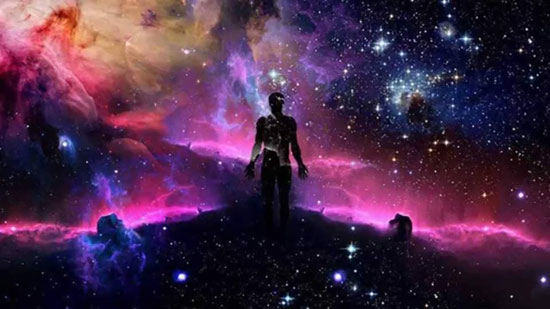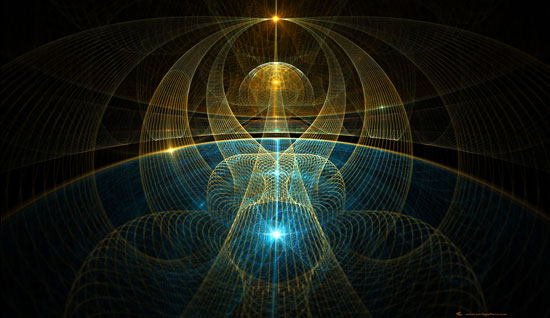The out-of-body experience as dimensional translocation (1)
Scientific theories that prove the existence of other dimensions – strange worlds inhabited by alien life forms

“Pause for a moment and try to imagine four-dimensional space. It is right next to you, but in a direction you can’t point to. No matter how well hidden you may be, a four-dimensional creature can see you perfectly well, inside and outside.” – Rudy Rucker, The Fourth Dimension.
“How might these beings be even dimly aware of our presence, if we normally don’t have an inkling of theirs? Once more, we’re treading on extraordinarily thin ice by even thinking about explanations for this phenomenon. The mere need to attempt an understanding shows us how far afield our thinking has come.” – Rick Strassman, M.D., DMT, The Spirit Molecule.
“If these men are correct, then physics is the study of the structure of consciousness.” – Gary Zukav, The Dancing Wu Li Masters.
Consensus reality in the “real world” is founded upon corporeal entities beholding three-dimensional space. When out-of-body explorers or UFO abductees claim that they passed through solid walls during their experiences, they are contradicting perhaps the most fundamental perceptions of human observers.
Scientism condemns such assertions as either fraudulent or hallucinatory because if they were accepted as legitimate, our entire conception of reality would collapse – an appalling prospect, challenging the credibility of all self-appointed official observers. Nevertheless, when faced with such an abundance of anomalous data any fearless spectator might suggest that our concepts of dimensional location need to be re-evaluated and clarified.
At its simplest, the experience of three-dimensional space is the awareness of three perpendicular axes: North-South, East-West and Up-Down (e.g., a cube). Two-dimensional space (a flat plane) contains only two of these axes, and one-dimensional space consists of only one axis – a single line.
Time is also a dimension, though not a spatial one; however, it is a necessary extension to our awareness of space, and so we normally describe our reality as three dimensions of space, plus one dimension of time – the so-called “four-dimensional space-time continuum”. Even small children can understand this because we spend all our lives living within its confines: it’s an experience so commonplace and taken-for-granted that we never really think about it. (It is, after all, our consensus reality).
Four-dimensional space, on the other hand, though mathematically describable, is a concept virtually impossible to visualise. That’s because progression from one spatial dimension to another follows a logical sequence of perpendicular extension: a plane is merely the extension of a line in a direction at right-angles (“perpendicular”) to that line’s axis; a cube is created when a plane is extended at right-angles to that plane’s axis.
This is easy enough to portray as long as we’re dealing with three dimensions or lower, but in what perpendicular direction would a cube have to move to create four-dimensional space? Even if you know the secret, the mind boggles and goes into spasms while trying to visualise it.
The reason for this is because we are multi-dimensional entities “serving time” in a three-dimensional spatial prison and brainwashed into believing it’s a life sentence without parole or any hope of escape.
To switch metaphors, consider for a moment a Zen Koan – an existential test of your ability to transcend your perceptual situation:
“You are standing on a spot where (judging by the rumbling sounds and trembling beneath your feet), a volcano the size of Krakatoa is just about to erupt. Immediately above your head an enormous fireball, a meteor as big as Manhattan, is only seconds away from crashing exactly where you’re standing. A few meters to your front, a tidal wave (over a kilometer high!) is cresting and about to break. Six meters behind you (at Ground Zero), a hydrogen bomb test is in its final few seconds of countdown; to your immediate right, the entire Nazi army from World War II is bearing down upon you with distinctly murderous intentions. And finally, coming up fast on the left, a charging herd of ten thousand enraged bull elephants is about to stomp you into the dirt.
Koan: In what direction lies escape? (Hint: it’s the only “perpendicular” direction available to you, and given the above circumstances you are about to take it whether you want to or not!)”

There are other ways of visualising this: consider the “black hole” or “singularity”. A black hole is created when a largeish star (about 50 times bigger than our sun) consumes all its nuclear fuel and implodes into its own intense gravity. Anything, including light, approaching within a given critical distance of a black hole is sucked into its whirlpool, never to be seen again. Physicists postulate that such imploding singularities depart from our own space-time to create new parallel-universe/space-time dimensions. (The connections between them constitute the familiar “worm holes” so necessary for Captain Kirk’s navigation of the Starship Enterprise.) What appears to us as a black hole implosion in this universe becomes a “white hole” explosion somewhere else – creating a whole new universe, a whole new dimensional reality:
“Relativists realized that there is nothing to stop the material that falls into a singularity in our three dimensions of space and one of time from being shunted through a kind of space-time warp and emerging as an expanding singularity in another set of dimensions – another space-time. Mathematically, this ‘new’ space-time is represented by a set of four dimensions, just like our own, but with all the dimensions at right angles to all the familiar dimensions of our own space-time. Every singularity, on this picture, has its own set of space-time dimensions, forming a bubble universe within the framework of some ‘super’ space-time, which we can refer to simply as ‘superspace’.” – John Gribben, Is The Universe Alive?
Notice that the rule of perpendicular extension is maintained in the creation of these new universes and that any observers within them would perceive an analogy of our own familiar four-dimensional space-time continuum. (Should they be practitioners of Scientism, let us forgive them for believing that theirs is the only reality that exists!)
“Now imagine that you are standing outside on a clear summer’s night – all the stars above the horizon are visible to your sight. Assume (for the purpose of illustration) that the hypothetical XYZ-123 galaxy (one-hundred million light years from Earth) is shining brightly. The photons (waves or particles, take your pick) which were emitted from the XYZ-123 galaxy during Earth’s dinosaur days, are just now arriving on our planet; they implode through the pupils of your eyes to explode within your brain: ‘Ah-ha – yes, there it is! Just above Orion, the familiar old XYZ-123 galaxy’, says your mind-observer.
Koan: Where do these photons (after their exhausting one-hundred million year journey through interstellar space) go upon entering your own personal black holes (eye-pupils)? The radiation from an entire galaxy registers on your brain, is interpreted by your mind, and then what? And then where? Surely those photons can’t just ‘wink out’ after going to all that trouble to get here! Can they?”
“The matter [falling into a black hole] cannot escape back into the universe we know, yet if it does not disappear at a singularity it must pass into a region of spacetime that we do not know. Sometimes such unknown regions are called other universes, the effect of gravitational collapse being to establish a bridge or tunnel into these enigmatic ‘parallel’ worlds. The collapsing star, or whatever matter falls in after it, falls on through the tunnel and out into, presumably, a cosmos much like our own.” – Paul Davies, The Edge of Infinity.
Look at it another way: Imagine a point existing in some kind of pre-spatial “void” – the Tao, perhaps (whatever that is). Mathematically, a point has zero dimensions, but it exists anyway because consciousness defines it that way. A zero-dimensional point existing in “non-space” probably comes as close to “nothing” as we can imagine, but quantum cosmologists say that our universe was created out of just such a “singularity”. They also tell us that nothing can take place without an observer: “The universe is supposed to be everything that there is, and if all is quantized, including spacetime, what can collapse the cosmos into reality without invoking consciousness?” – Paul Davies, Other Worlds.

The implications of this concept are astounding! If the zero-dimensional point is all that exists, and if it “decides” to “extend itself” and become the universe, by the rules of quantum physics it can’t be anything but Consciousness itself! (Whether you regard this as a non sequitur or not depends on which belief system you use to define your illusions.)
Anyway, the rules of dimensional extension tell us that movement in any direction from a point is perpendicular, so one dimension (a line) is created if the point moves at all. Should it turn from there, two dimensional space is defined; and of course all it has to do next is make one more right- angle turn and we have three spatial dimensions. Should all of these movements happen simultaneously, we have a passable description of an explosion: “The evidence suggests that the Universe was born out of a singularity – a point of infinite density occupying zero volume – and that in the first split second the tiny seed containing all the mass and energy in the observable Universe went through a period of exponential expansion, known as inflation.” – John Gribben, Is The Universe Alive?
This “inflation” is the Big Bang that became our universe – a point of infinite density occupying zero volume (a mind-numbing concept!) “explodes”, creating space, time, matter, energy, and anything else we haven’t discovered yet. Unfortunately, when most people imagine the Big Bang they visualise it as a three-dimensional event, forgetting that all other possible dimensions must also be factored into the equation. Which is to say: the primordial point explodes (the Big Bang), but because this is a multi-dimensional affair, it is also imploding (the Big Whimper, perhaps), creating all of multidimensional space in one event. If our point is indeed conscious, as quantum theory demands, it follows that consciousness is a priori to any and all phenomena, and anything created by it is by definition part of it: hence everything that exists is in some way conscious, just as many spiritual traditions tell us.
Read the second part of the article
yogaesoteric
January 27, 2019
